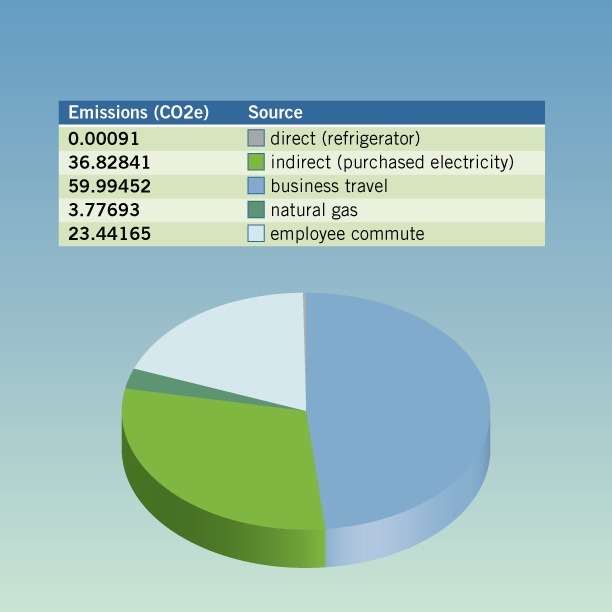Throughout the year, we hear interesting and inspiring stories about how companies, groups, events and individuals are using CRTs to balance out their emissions. But we are rarely the story teller. So this month, we’re taking the opportunity to be the featured Climate Action Offsetter and provide a view of a different side of our work.
Each year we calculate our emissions inventory using the General Reporting Protocol of The Climate Registry, a nonprofit GHG emissions registry that sets consistent and transparent standards for inventory reporting. Our emissions inventory is independently verified by an ANSI-accredited verification body and publicly registered for full transparency.
For our emissions profile, we calculate our direct emissions (fugitive scope 1 emissions from our office refrigerator), indirect emissions (scope 2 emissions from purchased electricity), and optional reporting emissions (scope 3 emissions from business travel and employee commuting, and optional scope 2 emissions from natural gas). We calculate our purchased electricity by using the TCR General Reporting Protocol Area Method, which applies our percentage of square footage in the building to the buildings usage and average occupancy rate. We track all business trips and calculate travel emissions based on mileage and method of transportation. And we conduct thorough employee surveys regarding staff commutes to and from work to calculate emissions based on the method of commute.

During the calendar year 2011, the Reserve was responsible for 124 metric tonnes of carbon dioxide equivalent (CO2e) emissions. The Reserve fully offset its annual emissions through the Climate Action Reserve Blind Trust, which was created to coordinate the purchase and retirement of Climate Reserve Tonnes (CRTs) while avoiding any potential conflict of interest or appearance thereof.
Offsetting our emissions inventory is the final component of our sustainability program. We recognize that offsets are an important tool to meeting emissions goals, but must be paired with a strategic plan to reduce emissions as much as possible. We have adopted several green initiatives to reduce our operational impact on the environment and climate.
We offer a flexible telecommuting schedule for staff to work from home one day or more per week, thus preventing transportation emissions. We also subsidize Metro cards to foster greater use of LA’s public transportation system by staff. Approximately 57 percent of our staff commute by public transportation on a regular basis.
Our office supply purchasing policy is to buy recycled or compostable products when available – in most cases, such options are available! Our communications materials are printed on Forest Stewardship Council (FSC)-certified paper with vegetable-based inks. We have completely done away with the traditional fax machine and have opted to receive/send fax messages electronically online via myfax.com.
We conduct the majority of our presentations via webinar which greatly reduces travel emissions, costs and time. Our webinar participants come from all over the globe, and have expressed appreciation for the online-based instruction as they may not otherwise have been able to participate.
Next on our list of green initiatives to tackle: looking at feasible options for composting in the office!
Tags: Climate Action Offsetter, offsets



